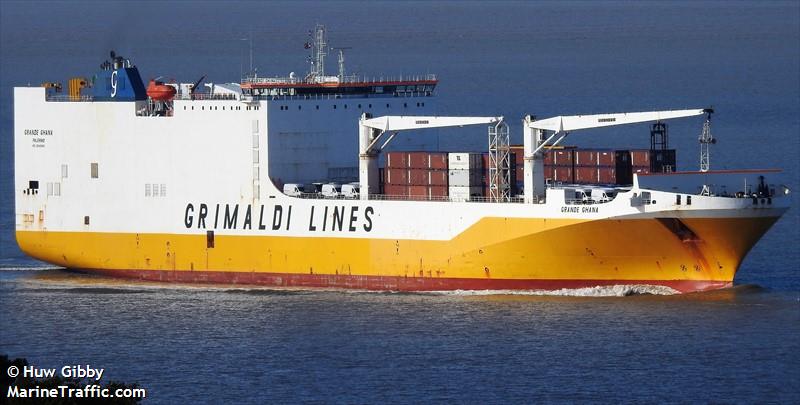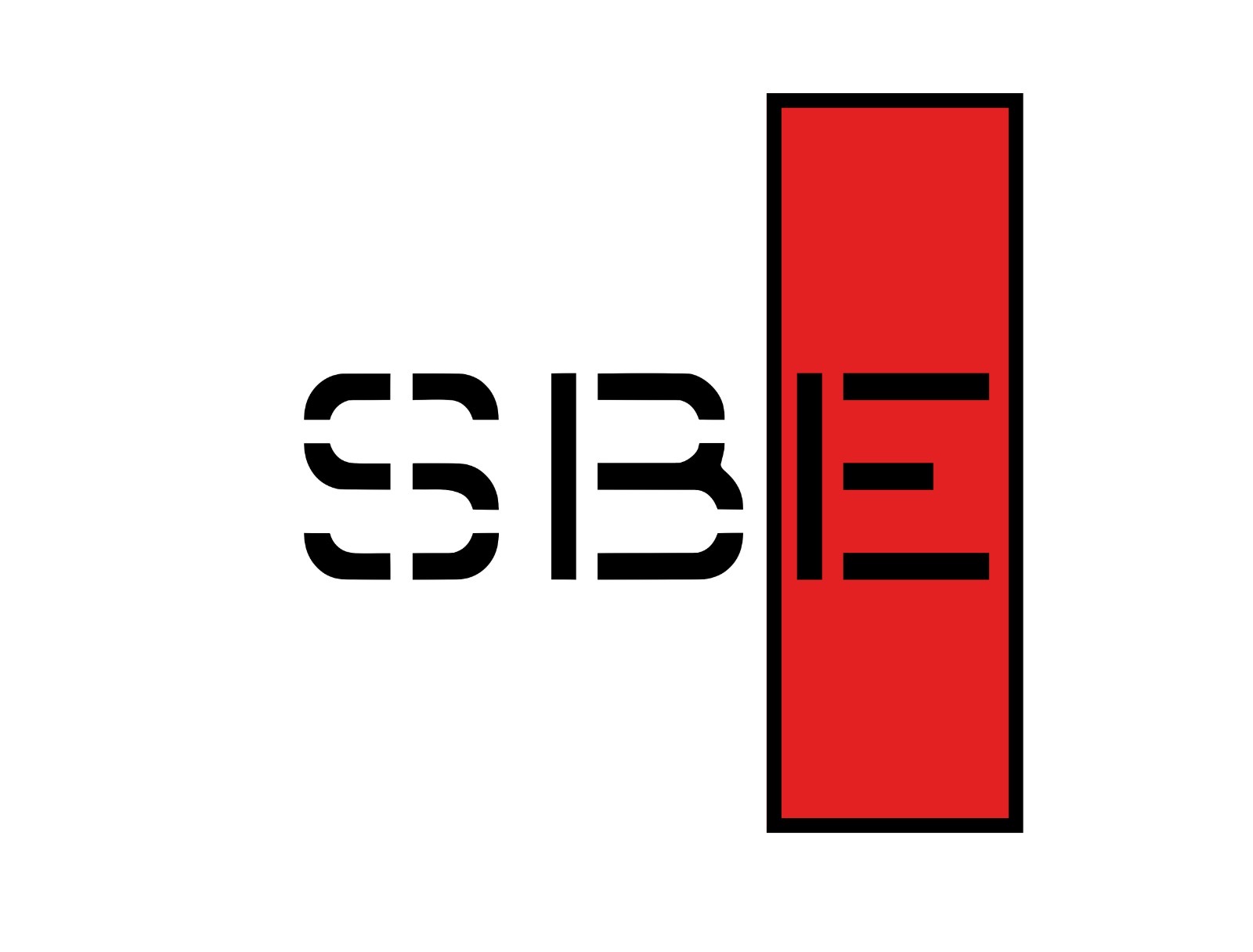Analysis Copy
A briefing with the captain follows a pilot’s first personal analysis. The exchange of information is essential for the success and safety of manoeuvres. Criticalities and problems are analysed and highlighted. The pilot’s experience ensures that all the puzzle pieces fit together and that the plan goes smoothly.
The Vessel’s Particular
Ro/Ro Vessel ‘Grande Ghana’ – Built 2009 – Italian flag – Gross Tonnage 47115 t. – Length Overall 211 m. – Beam 32.3 m. – Max Draft 9.75 m. – Controllable Pitch Propeller Right-Handed effect.

This type of ship’s peculiarity is the windage area. The pilot must carefully consider the wind effects exerted on the ship that can be variable or act at different angles.
Ship handling is not a matter of improvisation. Planning and risk assessment is the basis.
In the manoeuvre analysed, we will be on a Ro/Ro bridge with particular shapes, which will behave differently if unloaded or loaded. In the presence of wind, when unloaded, the sizeable stern structure with a significant area exposed to the wind action influences its behaviour. The imbalance in the forms will affect the dynamics of the manoeuvre. The pressure of the wind will push more on the stern, causing a substantial luffing effect.
When the ship is loaded, the presence of containers mitigates this effect. It balances the wind pressure, distributing it on a more significant portion of the hull—on the other hand, increasing the leeway of the entire ship.
In the video, we can appreciate the solid north wind power. Thirty knots with gusts at forty affect the entire development. The pilot uses every possible space to keep the vessel windward to bring the ship from the harbour entrance to the mooring.
The wind is not the only protagonist. To ensure a smooth, effective and safe manoeuvre, the pilot must also evaluate the ship trim & draft to understand what role the current will play, the powers of the propellers, and their effectiveness at different speeds; minimum ship speed and minimum steering.
For this purpose, we want to remember what we explained in our courses: The ship’s minimum speed corresponds to the dead slow ahead speed. Minimum steering speed is where the rudder maintains efficiency. The latter is usually with the engine stopped.
-
- As always, the initial planning and risk assessment end on the bridge after exchanging information with the captain. The master/pilot briefing will also be helpful to agree on methods and times to making fast the tugs, the safe working load (SWL) concerning the Bollard Pull, etc.
This type of ship obliges the pilot to prevent the stern from falling downwind by using good engine power to enter the harbour while keeping upwind, then taking advantage of the shelter offered by port facilities to decrease speed and secure the tugs.
The tugs have the task of helping the ship turn, altering its course or stopping it in the shortest possible space.
As we never fail to point out; the first tug to make fast must be the stern one.
This tugboat has the vital task of stopping the vessel. In extreme cases like the one described in this manoeuvre, we can also use this tug to safely drop the ship’s speed and secure the forward tugboat.
To enter the second part of the canal, the pilot takes advantage of the basin in front of him, which allows him to have a favourable course avoiding a dangerous drifting angle.
The speed will be managed in such a way as always to maintain a reserve of propeller thrust. Appropriate rudder angles will keep the stern away from danger.
The pilot’s pace is always with the ship angled with the bow windward. This set will allow the vessel to proceed on a straight course. If the bow is downwind, the pilot should intervene using the tugs. To do this, he would have to significantly decrease his speed to exploit the pulling power of the latter entirely. It is an extreme situation that the pilot should avoid if possible.
The navigation in the canal proceeds with alternation of wind intensity due to the port structures. The wind will be more intense in open spaces and less in sheltered ones. The pilot will have to manage speed compatibly with the mooring approach. In this last delicate phase, he will have to enter the mooring basin by making a sharp turn to the starboard.
Decreasing the speed will increase the drifting angle. In this case, it will benefit the turn. Another advantage is the right-handed effect of the propeller that will bring the bow to starboard with the engine running astern.
Rudder, engines, thrusters and tugs are all forces that, together with the wind and any current, must be masterfully managed by the pilot to turn the ship in confined spaces while keeping a safe distance from obstructions and dangers surrounding.
The handling of the tugs is precise and logical. Once the ship is almost headwind, the manoeuvring thrusters are amply sufficient to manage the bow’s yawing. The forward tugboat can then be released and transferred to the centre of the ship, where it can push to maintain the mooring position. The stern tug will always be ready to brake if necessary.
Decreasing the speed will increase the drifting angle. In this case, it will benefit the turn. Another advantage is the right-handed effect of the propeller that will bring the bow to starboard with the engine running astern.
Rudder, engines, thrusters and tugs are all forces that, together with the wind and any current, must be masterfully managed by the pilot to turn the ship in confined spaces while keeping a safe distance from obstructions and dangers surrounding.
The handling of the tugs is precise and logical. Once the ship is almost headwind, the manoeuvring thrusters are amply sufficient to manage the bow’s yawing. The forward tugboat can then be released and transferred to the centre of the ship, where it can push to maintain the mooring position. The stern tug will always be ready to brake if necessary.
A manoeuvring ship is subject to the influence of forces acting above and below the surface of the water and varies continuously; one of the pilot’s tasks is to monitor these forces constantly.
Planned manoeuvres consider the causes and effects predicted by the theory. Here are some valuable indications to be taken into account when interpreting the scheme to be created by managing the variables:
- The efficiency of the crews.
- The propulsion and steering capabilities.
- The weather and sea conditions.
- The ship’s draft.
- The seabed.
- The effect of the wind concerning the structures present ashore, etc.
It is impossible to apply algorithms that guarantee the result because the ship’s handling is – and remains over time – a seafaring art form where the pilot plays the role of an expert, director of the port, and connoisseur of men and ships.
Lessons Learnt:
- Navigate at a speed that allows the ship to have a ‘reserve thrust’.
- Increase the engine just the time necessary to keep steering and heading in the critical phase of the approach.
- Take control of the heading angle for compensating leeway.
- Use all the room available to keep the vessel upwind.
- Secure first the stern tug, wherever possible.
- Keep the bow windward. Prevention is better than cure.
- Always take advantage of the Paddle-wheel effect.
- Constantly evaluate all the forces that act variably.
- Think in advance and use the tool at your disposal efficiently.
- Consider the possibility of engine breakdown or a tug failure to be ready for an emergency.
